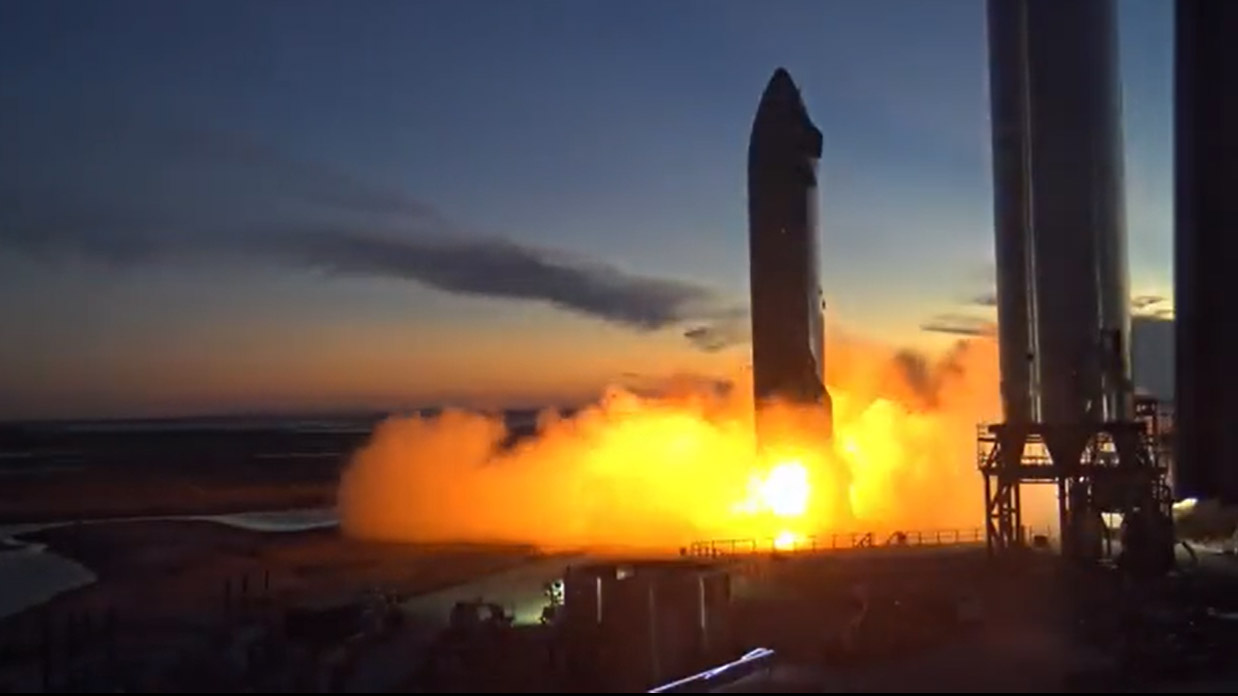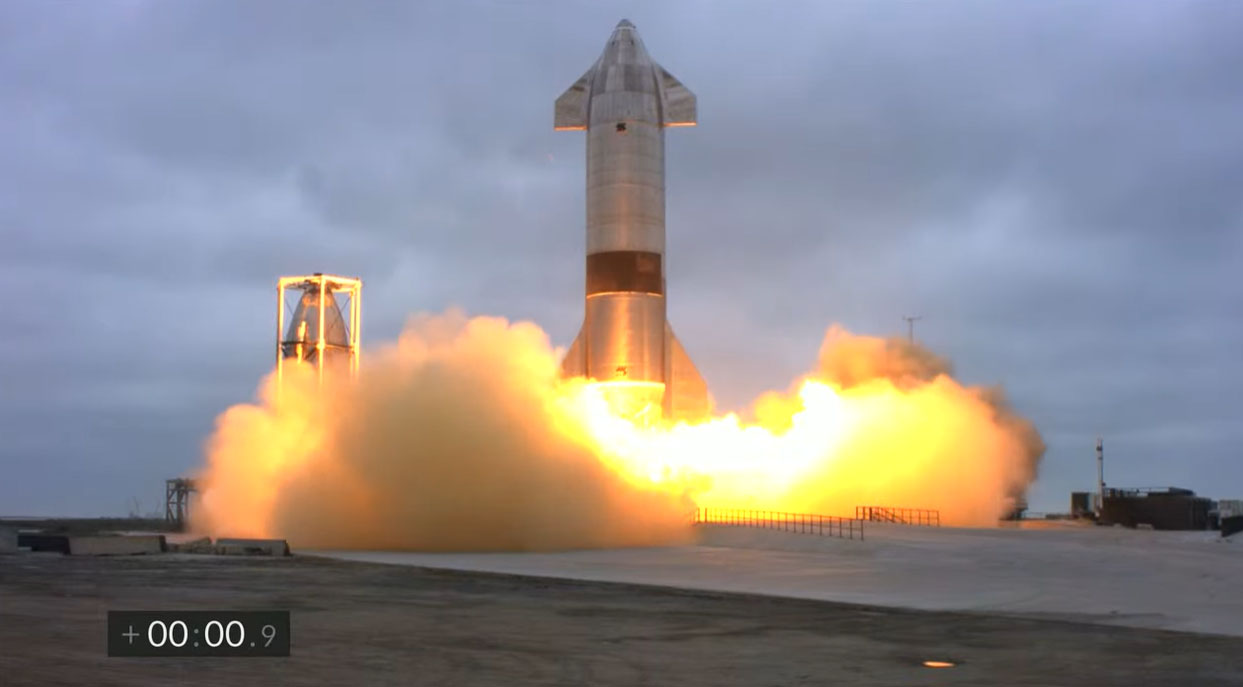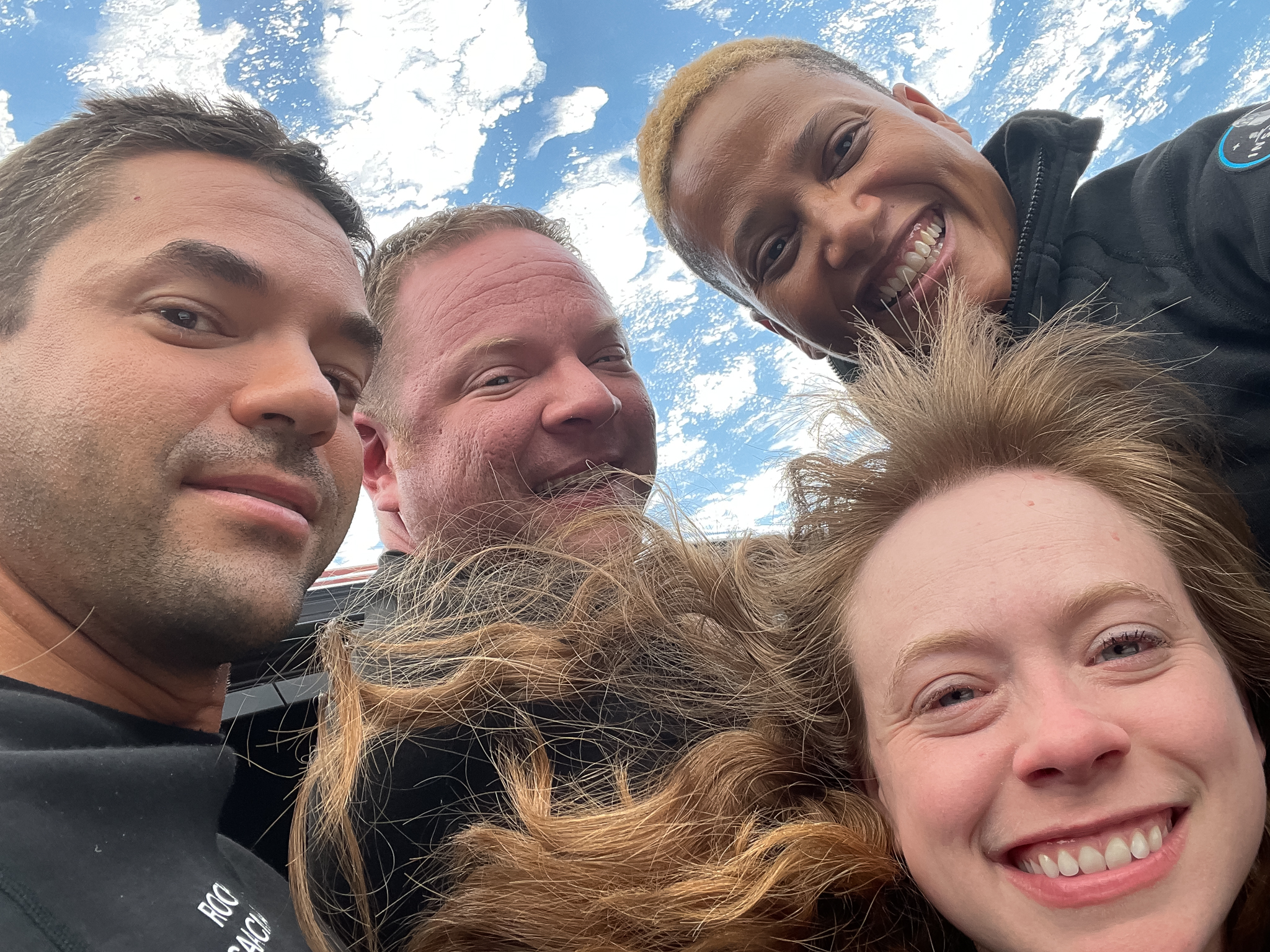SpaceX in 2021: Elon Musk's space company set records for reusability and more
From Starship to Starlink to civilian flights, the California company is growing a 'monopoly' in space

SpaceX is just months away from its 20th anniversary of founding in 2002 and it's headed into a new year in a stronger position than ever. In 2021, the California-based company built its strength in fields ranging from broadband communications to human launches.
The steady push by SpaceX into space exploration and eventual Mars landings is rapidly disseminating into popular culture, especially in the form of its fiery CEO and founder Elon Musk, who puts musings and predictions on Twitter almost daily.
This year alone, Musk began (reportedly) accepting payments for missions in the cryptocurrency Dogecoin and made a Saturday Night Live guest appearance in which he participated in multiple skits, even playing the Nintendo supervillain Wario.
SpaceX's record 2021
But even on the business side, there is so much activity playing out it's hard to keep track of it all. Hidden behind some of the company's more high-profile achievements this year (think Starship landing, Starlink and human spaceflight launches) is the powerhouse Falcon 9 rocket. Musk wanted to reach 48 launches of the system in 2021; although SpaceX didn't get nearly that far, the company did set a new record of 31 launches by December's end, with payloads ranging from military satellites to parts of its own megaconstellation of Starlink internet satellites. The company also successfully landed a rocket for the 100th time and flew a Falcon 9 for a record 11 times in December to cap off the year.
"SpaceX almost has a monopoly of launchers — not only human, but also unmanned as well," Pablo de Leon, chair of the University of North Dakota's space studies department, told Space.com.
De Leon is also a long-time researcher at the Kennedy Space Center in Florida on aspects of human spaceflight, especially spacesuits (a growth area for the university) and long ago, on payloads for the space shuttle program. He's seen SpaceX's modifications to Pad 39B at KSC in support of its Starship program that will eventually, if Musk's plans come to fruition, bring the company to the moon and Mars.

De Leon says he is skeptical about Musk's timeline estimations; Musk is hoping to put a human mission around the moon by 2023 and to land people on Mars within five years, but the latter will depend on Musk's Starship system working properly; Starship hasn't even had an orbital mission yet. That said, De Leon (an engineer by training) praised Musk's approach to testing, failing and learning from it.
Get the Space.com Newsletter
Breaking space news, the latest updates on rocket launches, skywatching events and more!
"There are many chances that they will find failure in the first flights," de Leon said of Starship. "But as we saw before, SpaceX is not afraid of failing during testing, because that's the way that that you learn."
De Leon added that as a private company, SpaceX has more room to fail than NASA "or any government agency," although the big question is what will happen if a human spaceflight system fails and SpaceX must wait several years for an investigation to complete, as NASA's space shuttle program experienced twice.
Dark clouds on a busy year

SpaceX did not respond to a Space.com request for comment on the company's year, but Musk did give an interview in Time Magazine (where he was named the 2021 individual of the year) in which he outlined the vision for the company.
"The goal overall has been to make life multiplanetary and enable humanity to become a spacefaring civilization," Musk told Time, discussing usual aspects of his vision including reusable rockets and landing on Mars.
Earlier this year, Musk wrote a memo to employees pointing to what he deemed a production "crisis" with the Raptor engine.
He said in the memo that the crisis could bankrupt the company, but clarified those comments further with Time: "Worst case situation . . . bankruptcy is not out of the question, not that it's likely . . . we cannot lose our edge or get complacent." As Time pointed out, since SpaceX does not release its financials in full it is impossible for the time being to get a sense of its profitability.
SpaceX also faced some scrutiny on its workplace in 2021.
In December, five former employees spoke out on allegations of sexual harassment at the private spaceflight company after an essay by one was published on the website Lioness. The company did not respond to a request for comment on the claims at the time.
The company's headquarters in Hawthorne, California, also reported 132 positive cases of COVID-19 since September, according to a Dec. 20 update by the LA County Department of Public Health. But SpaceX officials stressed that only one of those cases is suspected to have occurred at its rocket factory, with the rest originating at events outside its headquarters, which employs 6,000 workers. The company offers on-site testing to all employees, which is how several workers in the same area tested positive in September after attending an off-site event together, SpaceX wrote in an email to employees.
"132 is also the aggregate number of cases reported since the September case described above, and that number includes employees who may have been on vacation for several weeks, returned to work and received a COVID test at SpaceX that turned out positive," SpaceX wrote in the email. "Again, it does not mean 132 employees in Hawthorne have COVID today or contracted it in the workplace."
Human spaceflight feats
But what is clear is the company is assembling a power base in multiple industries. Its Starlink constellation, though slowed by supply chain issues and a liquid oxygen fuel shortage related to the pandemic, launched several more clutches of satellites this year. (Its effect on astronomy is still being debated, with critics saying the satellites remain far too bright despite company efforts, and pose a danger to long-exposure telescopic observations.)
Starship's SN15 prototype finally stuck the landing in May after several explosive attempts by previous prototypes. The latest version, SN20, was stacked briefly on the Super Heavy Rocket earlier this year, making it the tallest rocket in the world. But months later, the company is awaiting approvals from the Federal Aviation Administration to do an orbital flight, based on metrics such as an environmental assessment.
In human spaceflight, SpaceX was the ride that billionaire Jared Isaacman chose for the charity-focused Inspiration4 mission in September, the first to ever fly four civilians to orbit. SpaceX used the same spacecraft type, the Crew Dragon, to continue delivering crews to the International Space Station, and in December was deemed the only United States supplier NASA felt is capable of sending humans to space. (Boeing's CST-100 Starliner has delayed its second uncrewed test flight several times since an unsuccessful orbital attempt in 2019; Starliner is now expected to fly in May 2022.)

SpaceX is already making moves for 2022, including flying the first Axiom Space mission (Ax-1) to the International Space Station and continuing work on its Human Landing System contract in support of the Artemis human moon landing program.
The HLS contract was delayed several months due to a series of protests and legal challenges associated with SpaceX receiving a sole-supplier award from NASA, but is now ongoing after competitor Blue Origin lost its protest Nov. 4. The first Artemis landing, however, was pushed back to 2025 (from 2024) in part due to the HLS situation.
But Axiom will likely take a lot of attention next year as it will be the first all-private mission to the space station. Among the four crew members is Canadian investor and philanthropist Mark Pathy, who is working with a coalition of universities across the country to create a package of science experiments to fly with him.
One of the researchers in that group is Adam Sirek, who specializes in family medicine and aerospace medicine. He co-founded space health care company Leap Biosystems and teaches at Western University in central Canada.
"SpaceX has the agility of the newcomer in industry, [even though] they're not really newcomers anymore," Sirek told Space.com, saying the company appears more nimble than competitors Boeing and United Launch Alliance. "They have the agility and the ability to pivot and adapt to the customer's needs that the larger legacy organizations don't demonstrate."
Sirek said this is most evident with the Crew Dragon vehicle, which was developed with funding from NASA for NASA missions, but is also available for companies like Axiom Space to hire out as needed. Indeed, just days ago NASA greenlighted Axiom for a second spaceflight to the ISS on a Crew Dragon.
As a medical doctor, Sirek added that SpaceX will need to make sure to build out its infrastructure to support human missions properly. In the old days, he said, NASA's recovery operations included support from the U.S. Coast Guard and the U.S. Navy during splashdowns of missions, from Mercury to Apollo.
With SpaceX now executing splashdowns, it will need to figure out how to have medical personnel available to move around to wherever the spacecraft happens to be, perhaps very quickly if there is an on-board emergency. (That said, SpaceX does work with the U.S. Coast Guard on recovery operations, at least for now.)
SpaceX will need to "build a new series of industries and employ a whole new group of people, recruiting them from government primarily to start, and then training up a new cadre of individuals with these advanced life saving techniques," Sirek said. "It is a whole new area that they're going to have to develop, and quickly, to support a heavy launch schedule."

Both Sirek and de Leon praised Musk for the CEO's ability to keep his company innovating for so long, but noted that Musk is famous for putting out predictions that take a few more years to accomplish than publicized.
Sirek said that the Mars ambitions within a half-decade will likely need a second look, in large part because we do not know how the human body will behave out there. He acknowledged the investigations of missions such as the NASA Curiosity rover in determining the radiation environment on the Red Planet, but said a lot more work needs to happen before we would know the effect on humans.
This would include research in "partial gravity" environments, he noted; on Mars, it's less than 40 percent the force of gravity as one would encounter on Earth. Humans have spent a few days on the moon, where it is one-sixth Earth's gravity, but that is not yet enough to predict what would happen over a weeks- or months-long mission.
Sirek acknowledged the research of the ISS in greatly assisting with researching health on long-duration space missions, along with the now-retired Soviet-Russian Mir space station.
"We've done six months [regularly], and almost a year in space, and some slightly longer missions in low Earth orbit, shielded by the Earth and by the magnetic fields," Sirek said. "But we don't truly understand what happens when you remove that [protection], or when we expose [astronauts] to partial gravity."
Sirek also warned about fallouts if there was a human spacecraft-type setback in the middle of a Mars mission that delays when people can come home from a base, for example.
"These are going to be the challenging things that SpaceX and Musk need to look at, if they're going to really push themselves forward and try and accomplish this [landing] and still have the big shining SpaceX logo at the end of the day," he said.
Follow Elizabeth Howell on Twitter @howellspace. Follow us on Twitter @Spacedotcom and on Facebook.
Join our Space Forums to keep talking space on the latest missions, night sky and more! And if you have a news tip, correction or comment, let us know at: community@space.com.

Elizabeth Howell (she/her), Ph.D., was a staff writer in the spaceflight channel between 2022 and 2024 specializing in Canadian space news. She was contributing writer for Space.com for 10 years from 2012 to 2024. Elizabeth's reporting includes multiple exclusives with the White House, leading world coverage about a lost-and-found space tomato on the International Space Station, witnessing five human spaceflight launches on two continents, flying parabolic, working inside a spacesuit, and participating in a simulated Mars mission. Her latest book, "Why Am I Taller?" (ECW Press, 2022) is co-written with astronaut Dave Williams.
